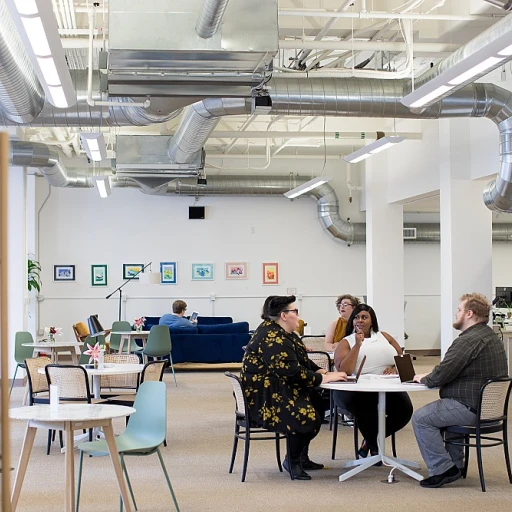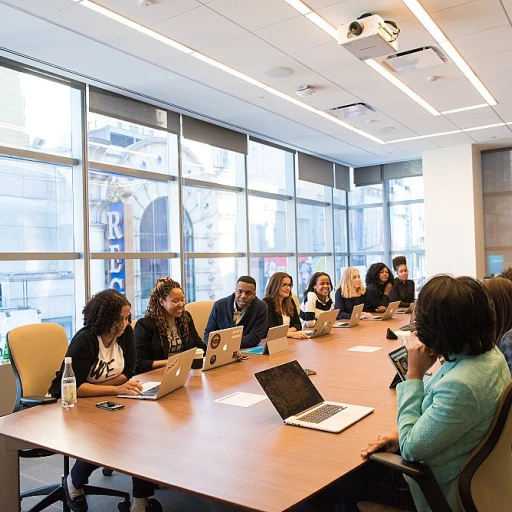
Understanding the Dynamics of Temporary Job Changes
The Evolving Landscape of Temporary Work
Understanding the dynamics of temporary job changes involves delving into various factors influencing the current job market. The rise in temporary employment has made significant transformations within the staffing industry. These shifts are primarily influenced by economic fluctuations and emerging trends that shape the future of work. Today, companies continuously adapt to meet the demands of a fast-paced labor market. Temporary job roles allow employers to respond to seasonal demands without committing to long-term hires. This adaptability is crucial in maintaining a flexible workforce amidst economic uncertainties. The workforce is also seeing an increase in diverse skill sets among candidates. Job seekers are now more equipped with specialized skills, which makes them valuable assets for potential employers looking to fill temporary positions quickly. This shift towards skills-based hiring ensures that both companies and candidates find roles that are mutually beneficial and fulfilling. Moreover, the temporary staffing landscape is increasingly shaped by technology. Innovations in recruitment processes and staffing trends have allowed for more efficient talent acquisition. Leveraging data-driven insights helps employers identify top talent swiftly, enhancing the overall candidate experience. For more insights on effective transitions within the workforce, you might explore how new leaders integrate within companies. This aspect significantly impacts how dynamic and fluid today's labor market is. Explore more about effective new leader integration.The Role of Technology in Shaping Candidate Experience
Harnessing Technology for Candidate Experience Enhancement
In the ever-evolving labor market, technology has undeniably reshaped the landscape of recruitment and candidate experience, particularly in temporary roles. As staffing agencies and companies adapt to technological advancements, they are finding innovative ways to enhance the candidate experience, making it more efficient and engaging. One of the key areas where technology plays a vital role is in streamlining the hiring process. For instance, applicant tracking systems (ATS) have become indispensable tools that not only facilitate job applications but also allow employers to efficiently manage and evaluate candidate data. These systems enable recruitment teams to identify top talent more rapidly by focusing on skills-based hiring, ensuring that the right skills match the job requirements. Another significant trend is the increase in remote work opportunities. Many job seekers now expect remote work options, which has pushed companies to refine their recruitment strategies to accommodate this preference. Technology facilitates virtual interviews and remote assessments, allowing hiring managers to connect with candidates regardless of geographical boundaries, thereby expanding the talent pool. Artificial intelligence (AI) is also transforming the recruitment industry. AI-powered tools can analyze large volumes of data to predict recruitment trends, helping companies and staffing firms to anticipate market shifts and make informed decisions. This proactive approach enables them to better align their temporary recruitment strategies with the current job market dynamics. Furthermore, technology plays a vital role in enhancing candidate engagement throughout the recruitment process. From personalized communication via chatbots to virtual onboarding experiences, technology ensures that candidates feel valued and informed at every stage. Embracing technological solutions not only improves efficiency but also enhances the overall candidate experience in temporary roles. As companies and recruitment firms continue to explore new technologies, the potential for growth and improvement in talent acquisition and retention remains significant. For more insights on leveraging technological tools to foster a positive candidate experience, visit Unlocking the Benefits of Retention and Referral Pros in Candidate Experience.Challenges Faced by Candidates in Temporary Positions
Obstacles Candidates Encounter in Temporary Roles
Temporary roles are a prominent part of today's labor market, driving growth and offering flexibility for workers and employers alike. However, the candidate experience in these positions can be laden with unique challenges that require adaptation and skill-based strategies to overcome. Candidates in temporary employment often find themselves navigating an ambiguous landscape where job roles are not always clearly defined, and expectations from employers can vary widely. This lack of definition in job postings creates confusion, impacting job seekers' ability to effectively present themselves and their skills to prospective companies. Temporary recruitment can exacerbate this, with hiring managers sometimes prioritizing rapid placement over the careful match of skills and job requirements. Moreover, temporary roles can limit a candidate's opportunity to develop crucial relationships within a company, affecting both their immediate work life and long-term career growth. Workers in these roles might struggle to showcase their full potential to staffing firms due to the transient nature of their positions, leading to underutilization of talent. Consequently, many candidates oscillate between temporary assignments without a clear trajectory for career advancement. Companies also face their own hurdles in providing a positive candidate experience. The fast-paced nature of temporary staffing demands swift decision-making and can lead to less candidate-focused communication, compromising the candidates' clarity and satisfaction in temporary job changes. To address these issues, employers must cultivate transparent communication and invest in the candidate experience, even in short-term roles, ensuring that open channels between staffing agencies and talent acquisition teams help mitigate misunderstandings. To learn more about opportunities for both companies and temporary workers seeking growth, you can explore additional resources.Strategies for Improving Candidate Experience in Temporary Roles
Enhancements for a Smoother Candidate Journey
Improving the candidate experience within temporary roles is vital to both attract and retain top talent amidst competitive labor markets. The focus should be on creating seamless interactions and positive experiences throughout the entire recruitment process. Here are strategic approaches that staffing agencies, hiring managers, and companies can adopt to improve the overall candidate journey:- Transparency and Communication: Encourage open communication from the outset. Inform candidates about the specifics of temporary roles, the hiring process, expectations, and timelines. Regular updates can significantly reduce anxiety and build trust.
- Personalized Experience: Tailor interactions to cater to individual preferences of job seekers. Utilize data analytics to understand candidate needs and personalize communication. This builds a stronger candidate-employer relationship.
- Efficient Use of Technology: Leverage advanced recruitment trends and tools like AI for skills-based hiring. This streamlines resume screening processes and helps in identifying the right fit faster, thereby enhancing efficiency.
- Onboarding and Training: Given the temporary nature of the work, a quick yet comprehensive onboarding program is crucial. Implementing a learning management system can significantly ease the transition into new roles and improve job satisfaction.
- Feedback Mechanism: Establish a clearly defined method for candidates to provide feedback. This not only helps in identifying areas for improvement but also makes candidates feel valued and heard.
The Impact of Economic Shifts on Temporary Employment
Economic Influences on Temporary Work Opportunities
The economic landscape often plays a significant role in shaping the job market, particularly in terms of temporary employment opportunities. During periods of economic growth, companies may ramp up their hiring efforts, thereby increasing the demand for temporary staffing solutions to manage surges in workload or to capitalize on market opportunities. Conversely, in times of economic downturn, businesses may seek flexibility by opting for temporary workers to avoid long-term commitments and maintain financial stability.
Recruitment trends have shown that employers increasingly rely on temporary roles to adapt to fluctuating economic conditions. Temporary recruitment allows companies to remain agile, adjusting their workforce size based on immediate requirements rather than long-term forecasts. This approach proves beneficial for both employers and job seekers, as it provides companies with needed talent while offering candidates diverse work experiences.
Temporary staffing agencies and staffing firms often play a pivotal role in connecting workers with job opportunities, especially during economic shifts. These agencies enable talent acquisition through a skills-based hiring approach, ensuring that candidates' skills align with the dynamic needs of employers. As a result, temporary roles serve as a bridge between job seekers and companies adjusting to economic changes, fostering a mutually beneficial environment.
Moreover, economic shifts can affect the talent market, influencing the types of roles companies offer. In times of growth, there might be an increase in job postings for full-time positions, while during economic slowdowns, temporary work becomes more prevalent. This dynamic creates a unique labor market where candidates who are adaptable and possess diverse skill sets can thrive.
Overall, economic shifts have a profound impact on temporary employment, shaping the landscape of recruitment practices and candidate experience. Employers and candidates alike need to remain adaptable to navigate the complexities of the ever-changing job market successfully.













